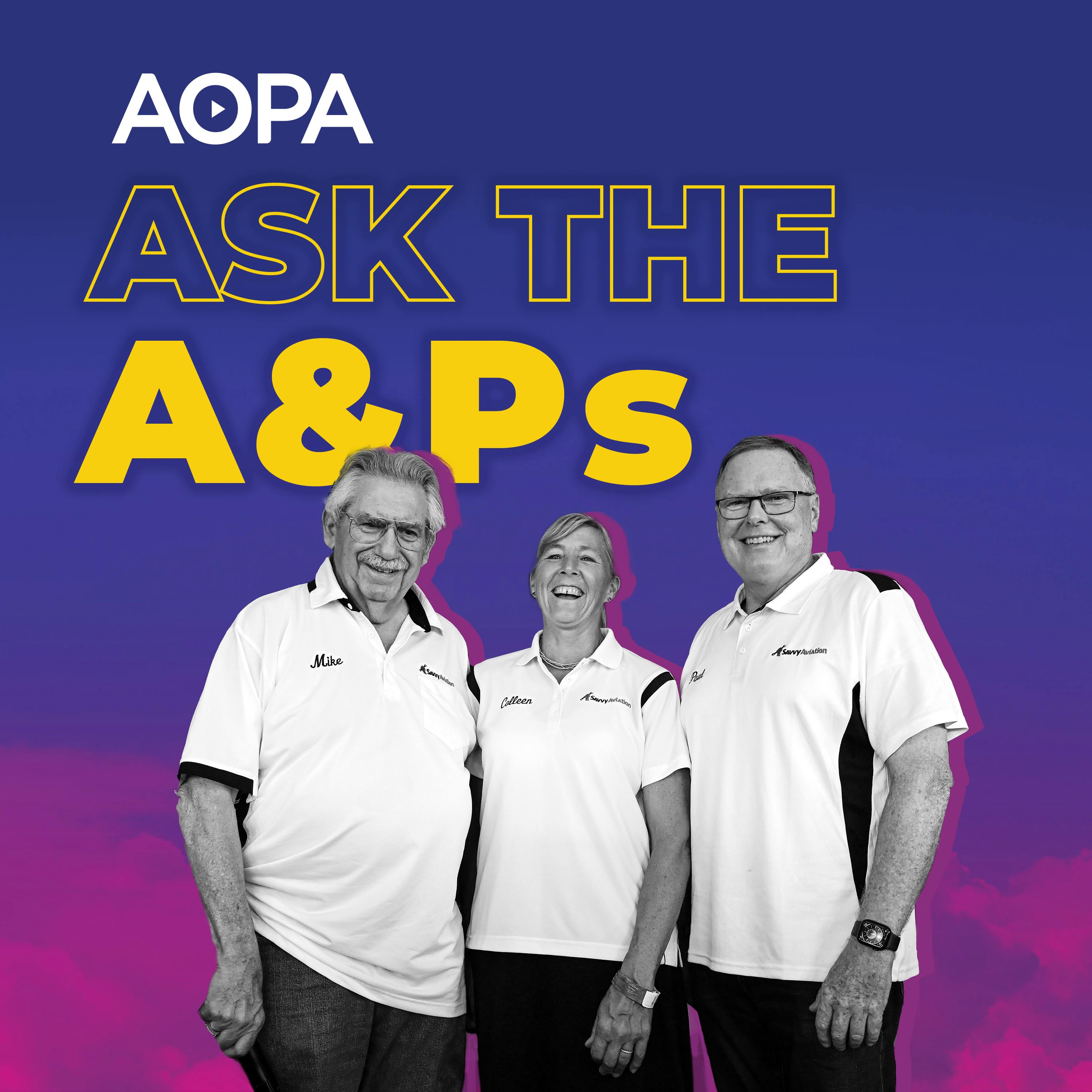"It's not our job to be the safety police"
Mysterious metal in the filter, reporting an owner to the FAA, when to change ELT batteries, and the elusive perfect hot start. This month Mike, Paul, and Colleen handle some of the toughest questions in aircraft ownership. Submit yours to [email protected] for a chance to be on the show.
Full episode notes:
Brian asks how one is to know when the ELT battery runs for more than an hour or has reached 50 percent of its life. FAR 91.207 requires replacement on these conditions. Short answer: you don’t. The hosts point out that the batteries can’t be load tested and there’s no outside monitor to know how long they may have been active. So, if in doubt, replace them.
Ryland wants to know if he can install a non-certified engine monitor in his certified airplane. Mike breaks down the decision tree that leads to an answer with an extreme example—installing a refrigerator in your airplane. You must show it meets the same certification requirements the aircraft had to meet. As Mike said, you have to jump through the same hoops that the manufacturer would have had to do had it decided to install one at the factory. First you must decide if it’s a major or minor alteration. A major requires approved data, which means getting an FAA field approval. If it’s a minor alteration the technician must make the determination that it meets all the applicable certification standards. Most difficult of which is that it doesn’t interfere with other systems in the airplane. Most mechanics won’t take it upon themselves to do that, he says. Colleen said she has gone through the field approval process and it’s quite difficult.
Richard wonders if he’s damaging his engine by keeping the rpm below 800 on initial startup. He flies a Cessna Skylane with a Continental O-470. The hosts agree that Richard is overthinking this a bit and there’s no risk of damage at operating at such a low rpm. Mike said he would use roughness as the lower limit.
Justin asks about his responsibility to report an unsafe aircraft to the FAA. After an alarming pre-buy inspection of an airplane he decided not to buy, he’s concerned another potential buyer may be at risk. Mike, Paul, and Colleen have strong feelings about this issue. Paul said a pre-buy isn’t an annual inspection, and it’s the owner’s responsibility to ensure airworthiness. This is the only person you should report the findings to, he said. As a follow-up Justin mentions an airplane he was asked to ferry that had a hole in the bottom of the wing. Mike explained the four entities responsible for airworthiness--the factory when the airplane is built, the owner, a mechanic one day a year at the annual, and most critically, the pilot in command.
Tim asks aviation’s most difficult simple question—how do you consistently hot start a big bore fuel-injected engine? As a CFI his normal advice to clients is to use the technique that works best for you in your airplane. In his Cirrus Paul goes throttle and mixture forward, fuel pump on until the fuel pressure stabilizes, then everything back, throttle cracked, and mixture slowly increased while cranking the starter. He uses this for hot or cold starts. Mike suggests priming and cranking simultaneously. Paul mentions a technique of running the boost pump on high for at least 45 seconds while the mixture and throttle are at idle cut off, and then performing a normal start. This circulates cold fuel in from the tank.
Jared is the maintenance officer of a flying club with a Cessna 172M. They’ve been finding metal in the oil filter that doesn’t look like that from normal sources. Lycoming couldn’t find it, and neither could the shop that did the overhaul 600 hours prior. The overhaul shop did warranty work, including replacing the crankshaft. It didn’t work. Jared had sent in photos and Mike didn’t think they looked like crankshaft issues. Paul thinks the oil pump is a strong suspect. But overall the hosts are stumped, and Jared promised to come back later with an update.
 Sign in
Sign in Sign in
Sign in Sign in
Sign in


















